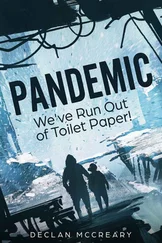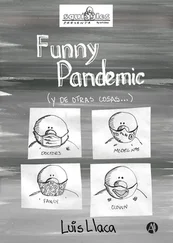He skirted the bed and reached up for the handle of the latch window, intending to call down to Inspector Lavat, when he suddenly stopped, freezing into immobility. The realization had come sooner rather than later, and suddenly he knew, or thought he knew, exactly how Aristides had died.
Gravas walked away from the window, giving the body on the bed as wide a berth as possible and stepped out onto the landing. He turned and pulled the door closed behind him and called out to his forensic team.
‘This is Gravas. Listen, both of you, and stop whatever you are doing immediately. Put your equipment down and just leave it where it is. Ensure that your masks and gloves are securely in place, then stand up and walk out of the house, touching nothing else. Do not even touch each other, and wait for me in the street outside.’
Two very puzzled men emerged rapidly from the spare bedroom and walked in single file down the narrow stairs. Gravas first checked that all the upstairs windows and doors were closed, then followed them down. On the ground floor he checked too that all the windows were secured, then he himself walked out of the house, pulling the door firmly shut behind him.
‘Dr Gravas?’ Lavat called to him as he watched this procession emerge.
‘Inspector,’ Gravas said, his voice slightly muffled by his mask, ‘don’t come near me or my team. Ensure that nobody else approaches the house. Set up a cordon around the whole village. Nobody must be allowed in or out until we have this situation under control.’
‘Situation? What situation? This is a murder, clearly a brutal murder, but to cordon the whole village? Is that really necessary?’
Gravas almost smiled. ‘I wish it were that easy,’ he replied, ‘but I’m afraid this particular killer can slip through any cordon you are able to erect.’
Lavat looked startled. ‘You mean you know who killed Aristides?’
Gravas nodded. ‘It’s not a who, Inspector, it’s a what. If I’m right, what killed the Greek was a thing called Ebola.’
Tuesday
Special Pathogens Branch, Centers for Disease Control and Prevention, Atlanta, Georgia
Tyler Q. Hardin – the ‘Q’ wasn’t short for anything; his middle name really was ‘Q’, which Hardin presumed had been his father’s idea of a joke – had actually got one foot in the shower stall when his pager went off. He snapped off the shower, which he’d just spent nearly five minutes getting to precisely the right temperature, picked up the pager and looked at the display. It showed a single acronym: ‘L4HA’.
‘Oh, shit,’ he muttered, forgot all about his shower and climbed back into the clothes he’d just taken off. He ran out of the house, slamming the door behind him, got into his two-year-old Grand Cherokee Jeep, started the V8 engine, pulled the shift lever into ‘drive’ and raced off down the street.
Traffic was heavy at the intersection, so Hardin reached down and flicked a couple of switches on the dashboard. Two red lights fitted behind the radiator grille began alternately flashing, and a two-tone siren started its discordant wailing. Traffic parted, Hardin hauled the steering wheel around to the right and floored the gas pedal.
Eighteen minutes later he walked into the CDC and three minutes after that he opened the door to Walter Cross’s office. Cross was Hardin’s immediate superior and head of the Special Pathogens Branch, but the two men had worked together for so long that they were firm friends.
They had to some extent been thrown together by their qualifications. Although the Centers for Disease Control is a major organization, employing around seven thousand people and with an annual budget in excess of two billion dollars, there are exactly eight employees who are qualified to work in the Bio-Safety Level 4 laboratory. One was Walter Cross, the Head of Special Pathogens – a highly specialized department within the Division of Viral and Rickettsial Diseases – and another was Tyler Hardin.
The CDC BSL4 laboratory is one of two maximum-safety biological research laboratories in America, and one of only six in the entire world. Entry is by ID card and a personal identification code punched into a keypad by a scientist wearing a totally sealed biological spacesuit, who even then has to enter through a negative-pressure airlock, to ensure that air can only bleed into the laboratory and never out of it, and a powerful decontamination shower.
Only inside one of these secure laboratories is it safe to examine any of the handful of microscopic and utterly lethal species-killer viruses.
Viruses are usually named after the places where they were discovered, and the first of what became known as the species-killers emerged in 1967 in Marburg in Northern Germany. The Marburg virus arrived at the Behring Works factory inside an infected African green monkey, the kidney cells of these animals being used by Behring to produce vaccines. Somehow, the Marburg virus jumped from the monkey into the immediate human population working at the factory. By the time the outbreak was over, thirty-one people had been infected and seven were dead. Marburg proved it had about a twenty-five per cent lethality.
Marburg is a type of organism known as a filovirus, one of a small and highly lethal family of haemorrhagic fever viruses, which closely resemble one another but which bear little resemblance to other known viruses. Under the impartial gaze of an electron microscope, the reason for the appellation filovirus (from the Latin filo , meaning ‘thread’ or ‘threadlike’) becomes immediately obvious, the shape of the virus being just that.
Marburg was the first, but unfortunately it wasn’t the last.
The Ebola River is a tributary of the Congo or Zaïre River and, just under ten years after Marburg began its rampage in Germany, a new and even more deadly filovirus emerged from the rainforest. Named Ebola Zaïre after the river and the country, it appeared almost simultaneously in over fifty native villages scattered near the headwaters of the Ebola River, and killed nine out of every ten people who became infected.
Ebola Zaïre was and is the most lethal fast-acting virus the world has ever seen, killing its victims in a matter of days, spreading easily and swiftly through any close-knit population through body-fluid exchange. A drop of infected blood on a cut finger is quite enough to start the infection.
It is popularly believed that Ebola attacks every organ in the body apart from skeletal muscle and bone, multiplying at a terrifying rate and converting body tissues into active virus particles. It is reported to liquefy the internal organs, resulting in uncontrollable bleeding from every orifice.
In fact, it does nothing of the sort. Almost all these ‘facts’ – repeated in countless books, magazines, television programmes and films – are either simply fiction or misconceptions promulgated by writers who haven’t bothered to do their research. True, Ebola does multiply at a terrifying rate, and uncontrollable bleeding from every orifice does frequently occur during the terminal stages of the disease.
But Ebola actually attacks only the circulatory system, and merely two components of that. It targets the platelets responsible for blood clotting, and the endothelial cells that line the inside of veins and arteries and essentially keep the blood contained inside. It launches, in effect, a two-pronged attack: the circulatory system begins to leak as the endothelial cells fail to function, and the blood that then leaks out doesn’t clot.
The effects are usually first apparent in those organs where the membranes are the thinnest and most vulnerable: typically the lungs, eyes, mouth and nose. Tissues and organs become soggy as they fill with blood; the lungs stop functioning properly; blood enters the digestive system; the throat becomes bloody and infected, making swallowing impossible; blood leaks from the eyes and other orifices; in the latter stages brain functions become erratic and then cease almost entirely, as the skull fills with blood.
Читать дальше












